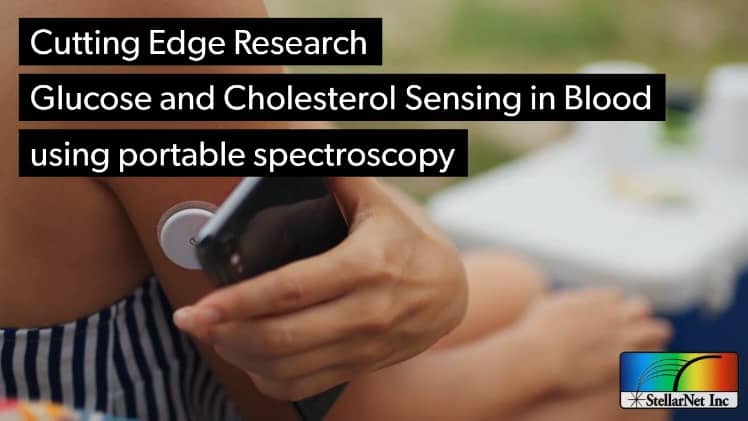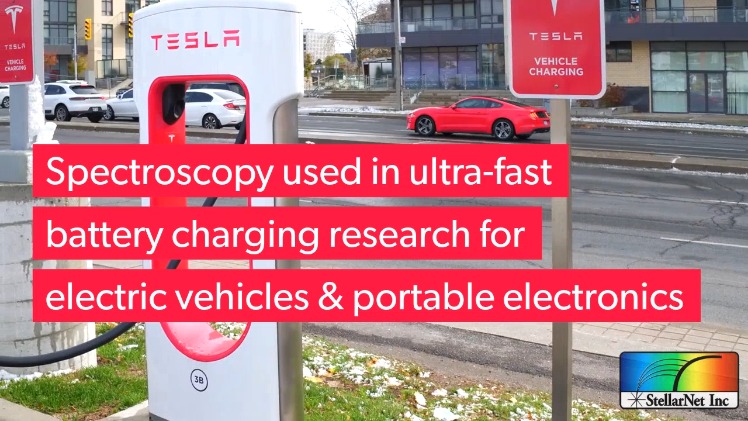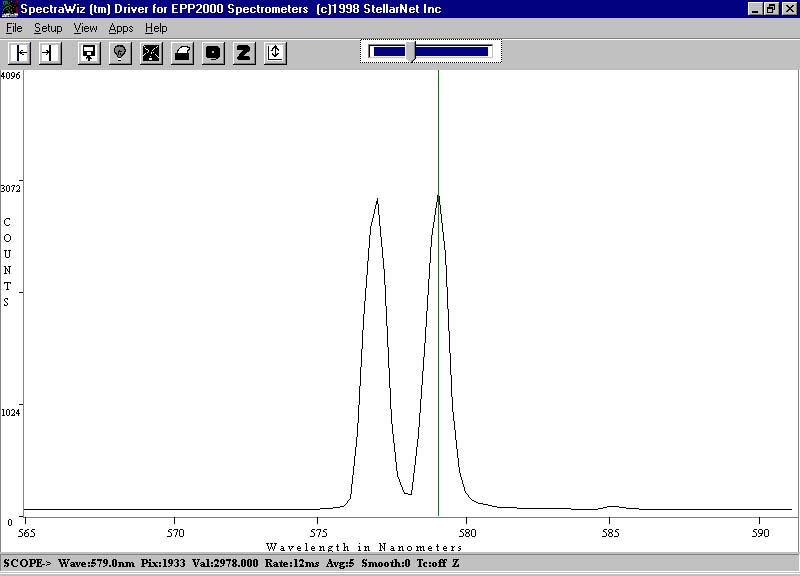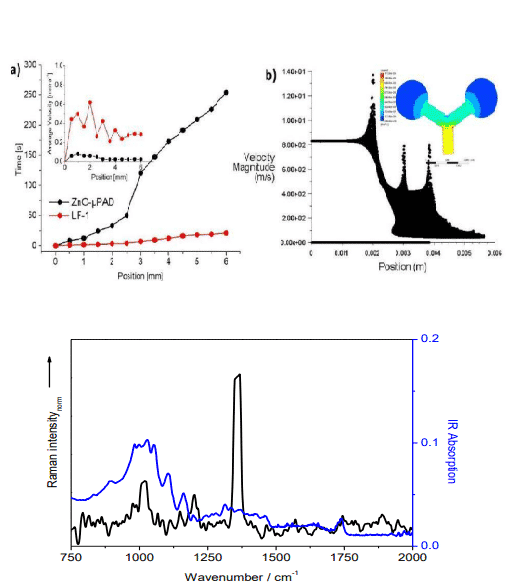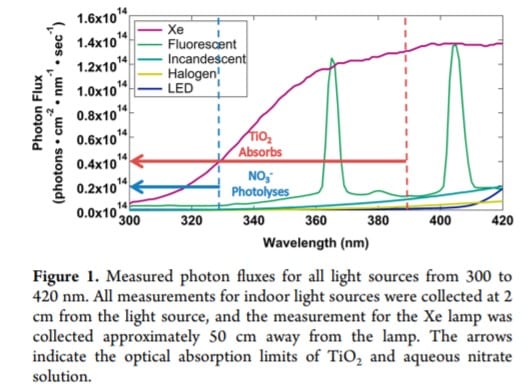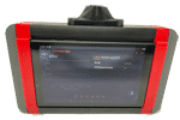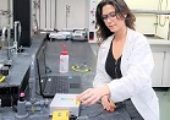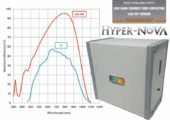It is now 2022 and the StellarNet team wishes you a very happy new year. Like many people, with the turn of the new year, the StellarNet team has been thinking about resolutions. But here at StellarNet instead of “New Year’s Resolution” in the typical sense, we have provided some descriptions of spectroscopy applications that are improved with high resolving resolution. Also, we are presenting some exciting customer research focusing on health and a clean environment for a great start to 2022!
“High Resolution” Customer Research
Why and when is resolution important in spectroscopy?
Resolution is important in being able to discern between different peaks of a spectrum. For example, take the 577nm and 579nm Mercury doublet. With a high-resolution spectrometer, you would be able to see the distinct peaks at 577 and 579nm.
With a lower resolution instrument, these two peaks appear less coherent and blend together into a single broad curve. A few applications where high resolution is needed are LIBS, laser characterization, and Raman.
Raman Spectroscopy
Raman is an application where high resolution is important. Raman spectroscopy focuses a monochromatic laser source to a sample, the incident light vibrates the molecules of the sample creating emission of energy at longer wavelengths. This effect is called inelastic scattering. The scattered light has a distinct fingerprint for each molecule and without a high-resolution spectrometer, the distinct details of the Raman scatter can make differentiation of similar molecules difficult. With our spectrometers, the Raman spectrum is displayed as sharp emission peaks which are characteristic for each molecule. When analyzing mixtures of molecules it is easier to identify the compounds by observation of the sharp emission lines. The problem with increasing resolution is that it divides out the collected energy into more detection pixels, reducing sensitivity. StellarNet uses high sensitivity detectors, thermoelectric cooling, and optimized optics to help collect these sharp weak signals. We offer Raman spectrometers at up to 6 different performance levels with increasing optical complexity and detector performance at each tier so that our customers can find the right fit for their budget and application.
LIBS (Laser-Induced Breakdown Spectroscopy)
LIBS, which is a type of optical emission spectroscopy, stands for Laser-Induced Breakdown Spectroscopy and allows us to analyze trace elements in a sample. A high-intensity pulsed laser beam (25mJ/pulse) is focused on the sample which creates a plasma. As the plasma cools, the excited atoms emit light of characteristic wavelengths distinct to certain elements. Having instrumentation with high resolution is very important for LIBS and optical emission spectroscopy because the characteristic peaks can be very close together. Some popular applications for LIBS are geology and mineralogy.
Laser Characterization
Laser characterization is another place where resolving power can be critical. Lasers have characteristically sharp emission lines due to the precision coatings of their high reflector (HR) and output coupler (OC) mirrors. Spectrometers can be used to measure the film coatings and determine the reflectance of the HR mirror and bandpass of the OC mirror to make sure that it is the right fit for the application. Need to measure high-resolution emissions of your laser in real-time? StellarNet has you covered with up to 50 picometer resolving resolutions. We have spectrometers covering ranges from 190-2500nm with real-time monitoring, two fully featured software suites to choose from, and many free customizable software options so that you can integrate the spectrometer into your laser feedback system. Use one of our HR-X models for high resolution 0.05nm resolving power or one of our dual blaze holographic concave grating models for broad-spectrum general applications. We also offer many wavelength ranges and resolutions in our compact crossed Czerny Turner plane grating optical designs. Options are available for high-speed characterization, triggering, and NIST traceable absolute power intensity measurements.
Glucose and Cholesterol Sensing in Blood Plasma Using Zno-Paper Based Microfluidics
Researchers from Indonesia and Taiwan have teamed together to investigate the reliability of ZnO-paper based microfluidic analytical devices (ZnO-µPAD) for blood plasma separation as well as bio-sensing of glucose and cholesterol. Two-layer paper-based microfluidic analytical devices coated with ZnO nanoflowers/ZnO spherical aggregates (ZnO-µPAD) for a rapid blood plasma separation and glucose sensing were developed. Glucose and cholesterol detection was carried out using spectroscopic techniques, both Fourier-transform infrared (FTIR) and Raman measurements. The spectroscopic investigation reveals that the IR absorptions and Raman signals at the typical vibrational frequencies of glucose and cholesterol are increasing at higher concentration. Read more
Ultra-fast charging in aluminum-ion batteries: electric double layers on active anode
Researchers from Nebraska and China and published in Nature, have report rechargeable aluminum-ion batteries capable of reaching a high specific capacity of 200 mAh g−1. This research is critical of improvements in portable electronics and electric vehicles. When liquid metal is further used to lower the energy barrier from the anode, fastest charging rate of 104 C (duration of 0.35 s to reach a full capacity) and 500% more specific capacity under high-rate conditions are achieved. Phase boundaries from the active anode are believed to encourage a high-flux charge transfer through the electric double layers. As a result, cationic layers inside the electric double layers responded with a swift change in molecular conformation, but anionic layers adopted a polymer-like configuration to facilitate the change in composition. Read more
Indoor Lighting Releases Gas Phase Nitrogen Oxides from Indoor Painted Surfaces
Researchers at the University of Toronto have published information on how indoor environments provide unique surfaces and lighting conditions which affect the photochemistry taking place there. As indoor illumination sources typically output wavelengths too long to affect gas phase photochemistry, the potential for surface photochemistry induced by indoor light sources has been mostly unexplored. In this proof of concept study, they report the emission of gas phase nitrogen oxides as a product of the illumination of glass surfaces coated with nitrate-doped TiO2 and nitrate deposited on indoor paint, using a variety of common indoor light sources. Read more…
Interested in any of the above applications or have a problem nobody can solve? Reach out to one of our experts today by calling +1(813)855-8687 or shooting an email to ContactUs@StellarNet.us

